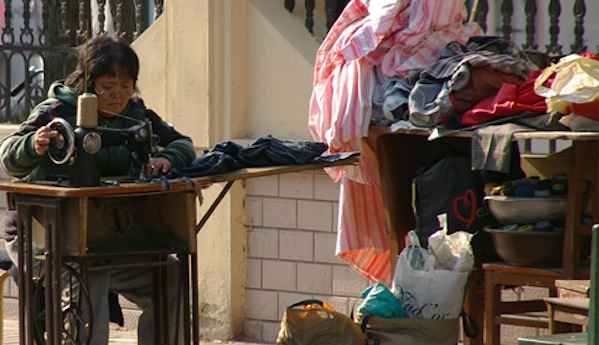But while wages for factory workers in China have certainly increased, the rate of increase has not kept pace with that of higher income earners. Indeed, the ever-widening gap between the rich and the poor is now one of the most serious problems facing the new leadership in Beijing.
In a thoroughly revised and updated study of wage levels in China published today, CLB examines the reality behind the wage inflation hype and shows that, for many workers, living standards have barely improved at all.
The study outlines the legal provisions on work hours and payment of wages in China, and explains in detail how the minimum wage is calculated. The minimum wage is supposed to be set at 40 percent of the local average wage but in many cities and provinces it is less than 30 percent. Internationally, China’s minimum wage is now in the mid-range of Asian economies.
Earnings for rural migrant workers in China are typically just over half the average wage, and there are considerable variations in wage levels from industry to industry. Average salaries in finance are now more than double those in manufacturing and three times higher than for catering and hotel workers. Moreover, the gap between the highest and lowest paid has been growing constantly, with one survey showing that top executives in China earn ten times the average wage.
The steadily increasing cost of living in China has meant that low income earners still spend a disproportionately high percentage of their take home pay on daily necessities such as food, housing and transport. Low income families typically allocate 46 percent of their overall expenditure on food, while the national average outlay on food is 36 percent of total expenditure.
The long-standing problem of wage arrears remains stubbornly in place despite numerous government measures to ensure prompt payment, including criminalization of malicious non-payment of wages in 2011. Worker protests against wage arrears are still a daily occurrence and many are now highly creative: protestors are increasingly using social media to bring attention to their cause.
Most of the wage gains over the last few years have come from workers’ actions rather than through government or industry initiatives. With fewer workers entering the workforce, employees are now in a much better position to push for higher wages and better working conditions through collective action. Employers are realising that if they want to recruit new staff and retain existing employees they will have to pay a decent wage.
CLB’s study, Wages in China, includes eight maps, charts and graphs and is available on our website as part of the Resource Centre, a section designed to provide those relatively new to China with an overview of the key labour issues. Other topics include employment discrimination, social security, labour dispute resolution and work-related injury compensation.










